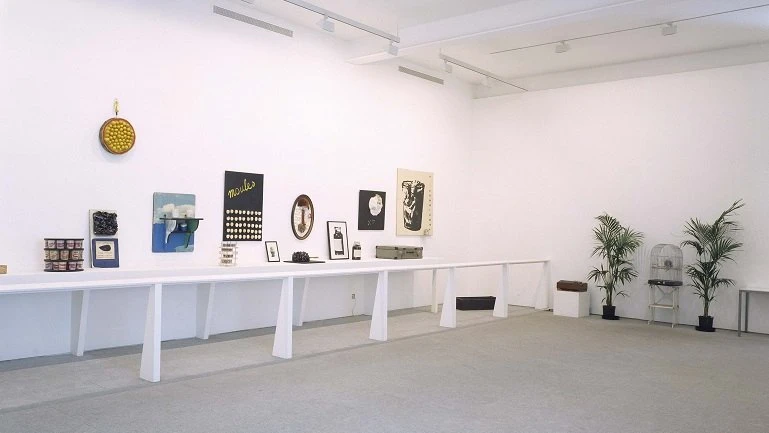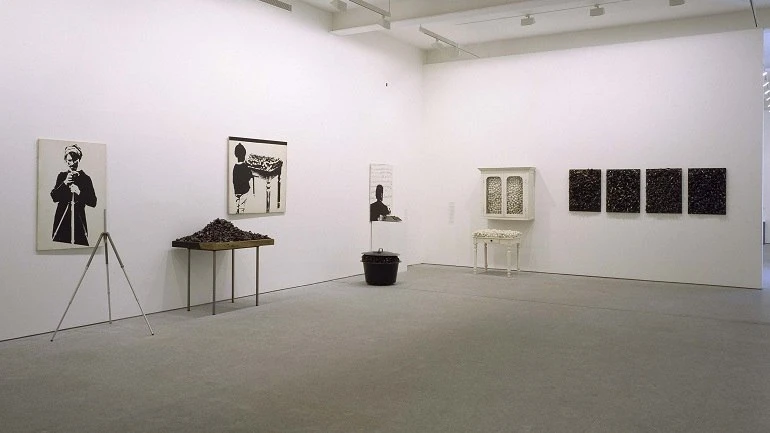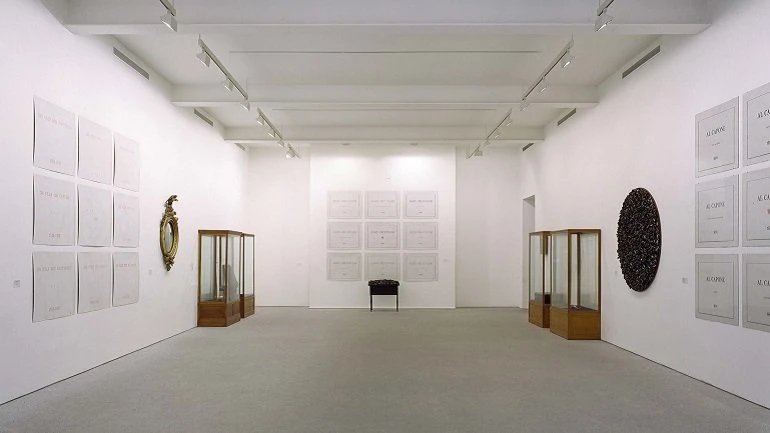Marcel Broodthaers
As a whole, Broodthaers' work, brought together here for this anthological exhibition in almost its entirety, reflects a unique personality that is able to create a complex, yet homogeneous, poetic and artistic discourse while building character within his creations. His output examines the limits of art, the public's experience and the social construction of the museum as a public institution in order to approach traditional categories of art genres. Objects, poems, multiples, projects and installations make up the mechanisms and mediums of a series of pieces overloaded with references, quotations and allusions to contemporary literary and visual culture. Any initial, potential ambiguity is in response to his grasp of language and his use of irony, wit and poetry; therefore, because of their inscrutable structure, his works are portrayed, in the words of the artist himself, as hieroglyphs and demand a conscious and active attitude from the viewer. In this respect he alludes to Magritte, relinquishing Surrealist clichés in favour of revealing the relationship between the object and its representation and the idea of joining the language of forms with the forms of words (Valise Charbon, 1966; L´Erreur, 1966).
Broodthaers' work has a methodological and conceptual influence from Stéphane Mallarmé and can be divided into three main themes. The first is language as a visual instrument and includes his practices of extending language: Pense-Bête (1963), Le Corbeau et le Renard (1967), Exposition littéraire autour de Mallarmé (1969) and Miroir (La signture de l´artiste) (1971). The second is the object as merchandise, questioning the objectification of artwork and the aura of the original piece, as shown in Jaula con huevos (1965-1966) and Tabac belge (1975). The third is a critical review of the museum as an institution, illustrated in his large project Musée d´Art Moderne. Département des Aigles (1968-1972). These works highlight how out of all his contemporaries Broodthaers is the one that most consistently and categorically challenges the social role of the artist and the commercial role of the artwork; in Broodthaers' own words: “I reflect on society and culture by means of all the pieces I make.”[1]
[1] Quote on Marcel Broodthaers, Madrid, Ministerio de Cultura, Museo Nacional Centro de Arte Reina Sofía, 1992, pge. 26. Original quote from Ludo Bekkers, “Gesprek met Marcel Broodthaers”, Museumjournaal, Ámsterdam, 15 February 1970, quoted from the original unpublished text in French from the sound cassette, 13 December 1969.
Artists
Jeu de Paume, Paris (December 17, 1991 - March 1, 1992)
Organised by
Jeu de Paume in collaboration with Museo Nacional Centro de Arte Reina Sofía
Image gallery



Itinerary
Jeu de Paume
17 December, 1991 - 1 March, 1992
Museo Nacional Centro de Arte Reina Sofía
24 March, 1992 - 1 June, 1992